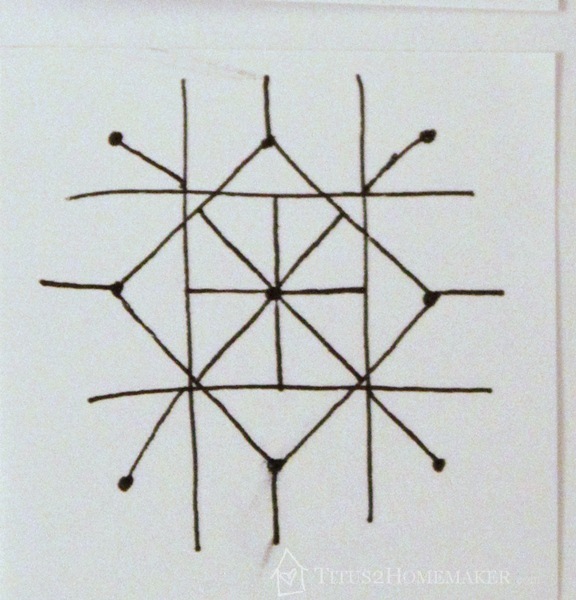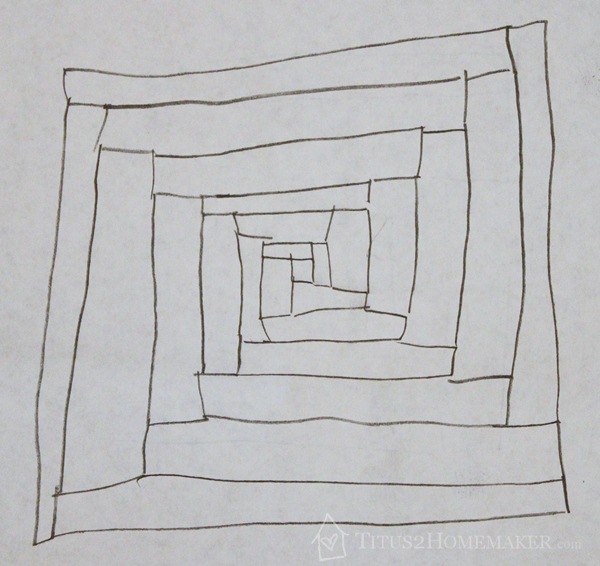I was provided by the publisher with a copy of this book to facilitate my review. As always, all opinions expressed here are entirely my own.
I don’t know about you, but I’ve been coming across Zentangle and Zentangle-inspired art for a while now. I think it’s beautiful! But I’m a little strange — I don’t naturally doodle. So I don’t find tangling as easy or obvious as I the average person probably does.
Zentangle Untangled, by Kass Hall, is a pretty awesome book because it provides the inspiration I need, as well as some step-by-step instructions. It also covers a lot of cool “twists” on tangling, like adding color, integrating tangling with rubber stamping, and/or scanning your tangles to manipulate them digitally.
My Experience
Honestly, I don’t think my tangles, so far, are nearly as beautiful as what I’ve seen others create. In fact, they’re kind of awkward, like the art version of gangly adolescents still growing into their hands and feet. But I actually finished a couple, which is more than I had ever done before I started reading this book.


(By the way, these were done on small white sticky notes. This is so easy and so portable — you can do it standing in line at the supermarket or waiting at the DMV!)
I think I should have just stuck with existing patterns. The early part of this book — after describing what Zentangle is, and telling you what you need (or don’t need) — actually includes instructions for twelve existing tangles. You get to see the step-by-step instructions for creating each one, as well as some ways to adapt or embellish the finished tangle.
My daughter opted to work with one of these existing tangles, “Cabin Floor.”

It’s a little wonky, but I still like it a lot better than my own.
The cool thing is that if you work your way through practicing these tangles — which really only require a drawing surface and something to draw with — you’ll learn a lot of different ways of building patterns. Some work out from the center; others start at an edge or corner. Some use curves; others use straight (or mostly-straight) lines.
After practicing these for a while, I believe it will be easier to create your own unique tangles, because you’ll start to “see” how an end result would be “built.”
There’s some really helpful information about shading, and what parts to shade to produce various effects.
A section on color demonstrates basic color theory and some simple types of color schemes.
There’s a whole chapter about art supplies and how different ones integrate with tangling and Zentangle-inspired art. Some are supplies that would be used in place of the standard black pen for drawing the tangle itself. Others are supplies that would be used to supplement or complement the tangle.
Another whole chapter addresses art journaling with this type of art. It talks about lettering, borders, backgrounds, tangling on patterned paper to add interest, creating shapes and accents, integrating rubber stamps, and even integrating Zentangle-inspired art with your photographs.
The final section (before the gallery) talks about going digital. The author shows how to scan in a tangle and manipulate it in a variety of ways. This allows the very same tangle to be used for a variety of pieces, with a surprising degree of variation in style. There are some amazing pieces here!
My Thoughts
I definitely recommend this book to anyone with even the slightest degree of interest. It’s easy, inexpensive, and accessible. It’s a great way to learn some art fundamentals (line, shape, color, etc.) in a pretty non-threatening context, and a very usable way. I may even pull this into our homeschooling.
This sounds really good! Do you think it would be helpful for scrapbooking (digitally)?
Assuming you’re willing to scan your images in (or snap them with your iPhone) then, yes, probably. The example images in the book from where she scanned her tangles and then manipulated them digitally would be amazing backgrounds.